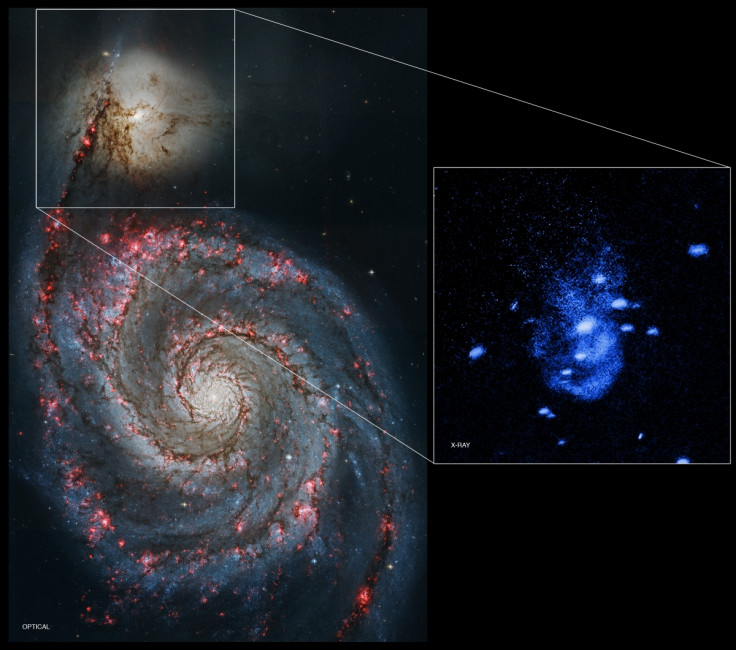Nasa's Chandra finds supermassive black hole burping in nearby galaxy

Nasa astronomers, using the Chandra X-ray Observatory, have discovered a 'burpy' supermassive black hole after spotting two huge waves of gas being emitted by it at the heart of a nearby galaxy called NGC 5195. The properties of the gas, according to the astronomers, suggest that there is enough material to trigger the formation of new stars defying an age-old misnomer that black holes are only destructive in nature.
"We think that feedback keeps galaxies from becoming too large. But at the same time, it can be responsible for how some stars form. This shows that black holes can create, not just destroy," said Marie Machacek of the Harvard-Smithsonian Center for Astrophysics (CfA).
Astronomers found the outburst cantered in NGC 5195, a small galaxy that is currently merging with the larger spiral galaxy NGC 5194 -- better known as the 'Whirlpool.' Both of these galaxies are in the Messier 51 galaxy system, located about 26 million light years from Earth.
According to Nasa, not only is this one of the nearest supermassive black holes to Earth that is currently undergoing such violent outbursts, but the phenomenon is also starkly similar to how our early universe was shaped.
"Our observation is important because this behaviour would likely happen very often in the early universe, altering the evolution of galaxies. It is common for big black holes to expel gas outward, but rare to have such a close, resolved view of these events," said Eric Schlegel of The University of Texas in San Antonio, who led the study. He added: "For an analogy, astronomers often refer to black holes as 'eating' stars and gas. Apparently, black holes can also burp after their meal."
© Copyright IBTimes 2025. All rights reserved.





















